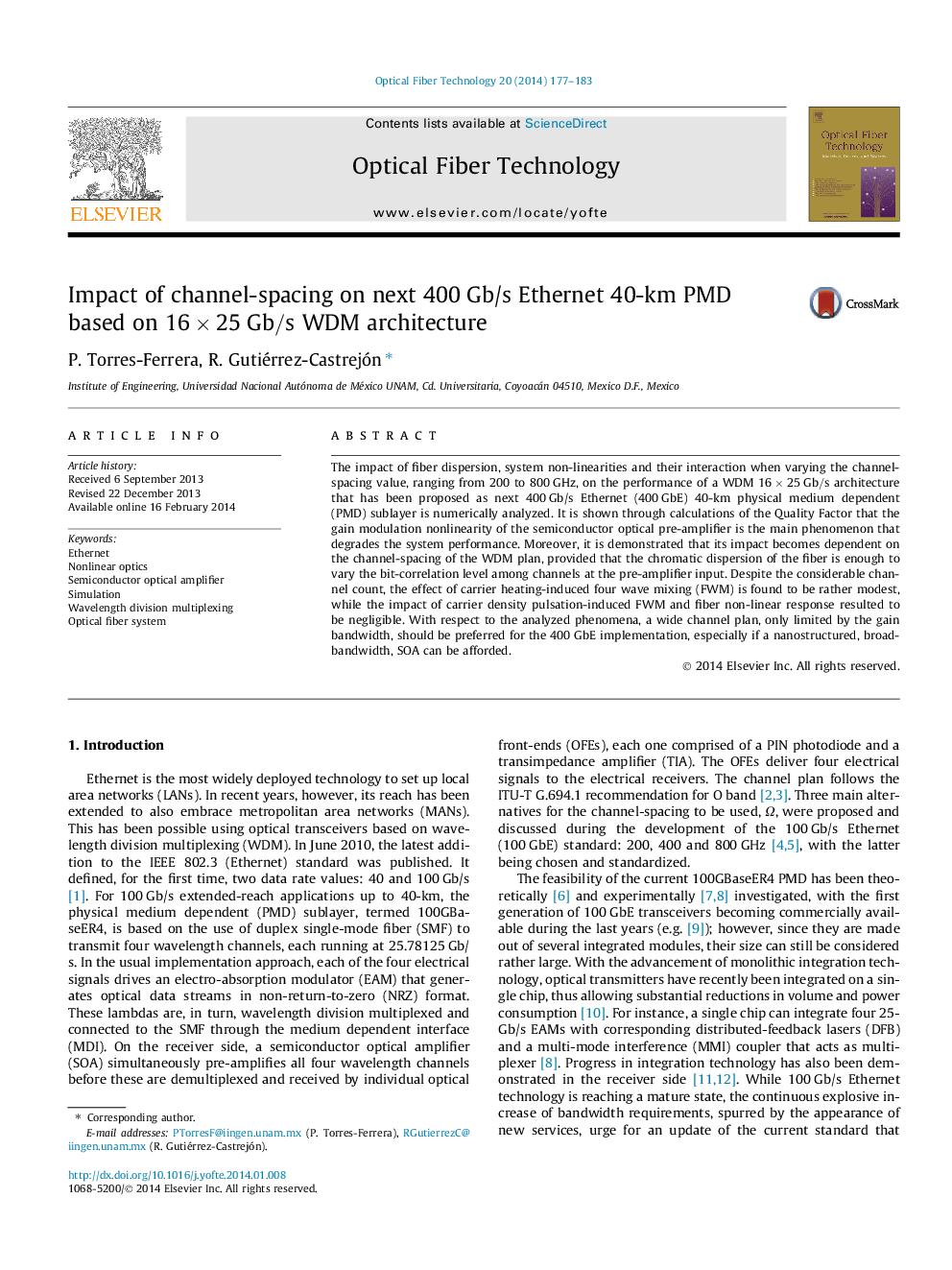| کد مقاله | کد نشریه | سال انتشار | مقاله انگلیسی | نسخه تمام متن |
|---|---|---|---|---|
| 464147 | 697292 | 2014 | 7 صفحه PDF | دانلود رایگان |

• Simulation of semiconductor optical pre-amplifier in variable-reach WDM system.
• 400 GHz channel-spacing for 400 GbE is proposed and its convenience demonstrated.
• Gain modulation in SOA is the main deleterious effect of a 16 × 25 Gb/s WDM system.
• Fiber dispersion reduces SOA nonlinear gain modulation penalty in WDM system.
• Four-wave mixing in fiber and SOA are inconsequential for 400 GbE.
The impact of fiber dispersion, system non-linearities and their interaction when varying the channel-spacing value, ranging from 200 to 800 GHz, on the performance of a WDM 16×25Gb/s architecture that has been proposed as next 400 Gb/s Ethernet (400 GbE) 40-km physical medium dependent (PMD) sublayer is numerically analyzed. It is shown through calculations of the Quality Factor that the gain modulation nonlinearity of the semiconductor optical pre-amplifier is the main phenomenon that degrades the system performance. Moreover, it is demonstrated that its impact becomes dependent on the channel-spacing of the WDM plan, provided that the chromatic dispersion of the fiber is enough to vary the bit-correlation level among channels at the pre-amplifier input. Despite the considerable channel count, the effect of carrier heating-induced four wave mixing (FWM) is found to be rather modest, while the impact of carrier density pulsation-induced FWM and fiber non-linear response resulted to be negligible. With respect to the analyzed phenomena, a wide channel plan, only limited by the gain bandwidth, should be preferred for the 400 GbE implementation, especially if a nanostructured, broad-bandwidth, SOA can be afforded.
Journal: Optical Fiber Technology - Volume 20, Issue 3, June 2014, Pages 177–183